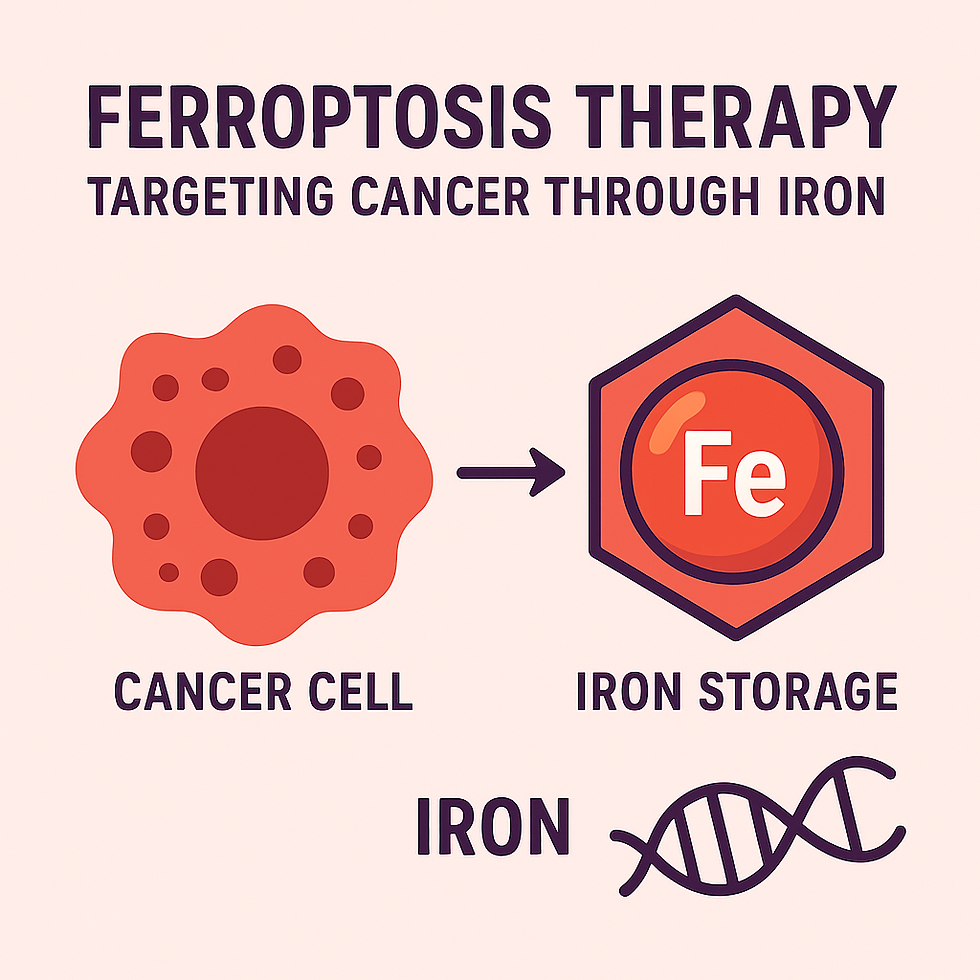Starving or Striking? How Iron Triggers Cancer Cell Death
- Rithu B S

- Aug 26
- 2 min read
Ferroptosis is a unique process associated with programmed cell death triggered by an abundance of iron molecules within cells. This process utilizes iron molecules to encourage the creation of harmful lipid peroxidases, which damage the cell membrane and lead to cell death.
Research has shown that cancer cells have a high demand for iron, requiring significant amounts to support rapid DNA synthesis and cell growth.
This demand created an opportunity by exploiting this weakness in cancer cells.

Ferroptosis therapy = An iron-based approach to combat cancer
Let's explore how this technique can be applied to real science:
Enhancing the iron concentration in cancer cells through the use of nanoparticles or specific drug molecules.
Inhibiting the antioxidant defense mechanism, such as GPX-4, which typically safeguards cells against lipid oxidation.
To prevent damage to normal cells, ferroptosis therapy is made selective by:
Targeting tumor cells: utilizing nanoparticles or ligands that specifically bind to cancer markers.
Exploiting cancer’s iron dependency: cancer cells absorb more iron and rely heavily on GPX4, increasing their susceptibility.
Localized activation: using light, ultrasound, or direct delivery into tumors to initiate ferroptosis only in those areas.
Protecting healthy tissue: employing rescue drugs (such as ferrostatin-1) or administering doses carefully.
In short by combining targeted delivery , tumor biology and controlled activation, ferroptosis therapy kills cancer while sparing normal cells.
References:
Jin, X., Tang, J., Qiu, X., Nie, X., Ou, S., Wu, G., Zhang, R., & Zhu, J. (2024). Ferroptosis: Emerging Mechanisms, Biological Function, and Therapeutic Potential in Cancer and Inflammation. Cell Death Discovery, 10, Article 95.DOI: 10.1038/s41420-024-01825-7
Cañeque, T., Baron, L., Müller, S., Carmona, A., & Colombeau, L. (2025). Activation of Lysosomal Iron Triggers Ferroptosis in Cancer. Nature, 621, 345–356.DOI: 10.1038/s41586-025-08974-4




Comments